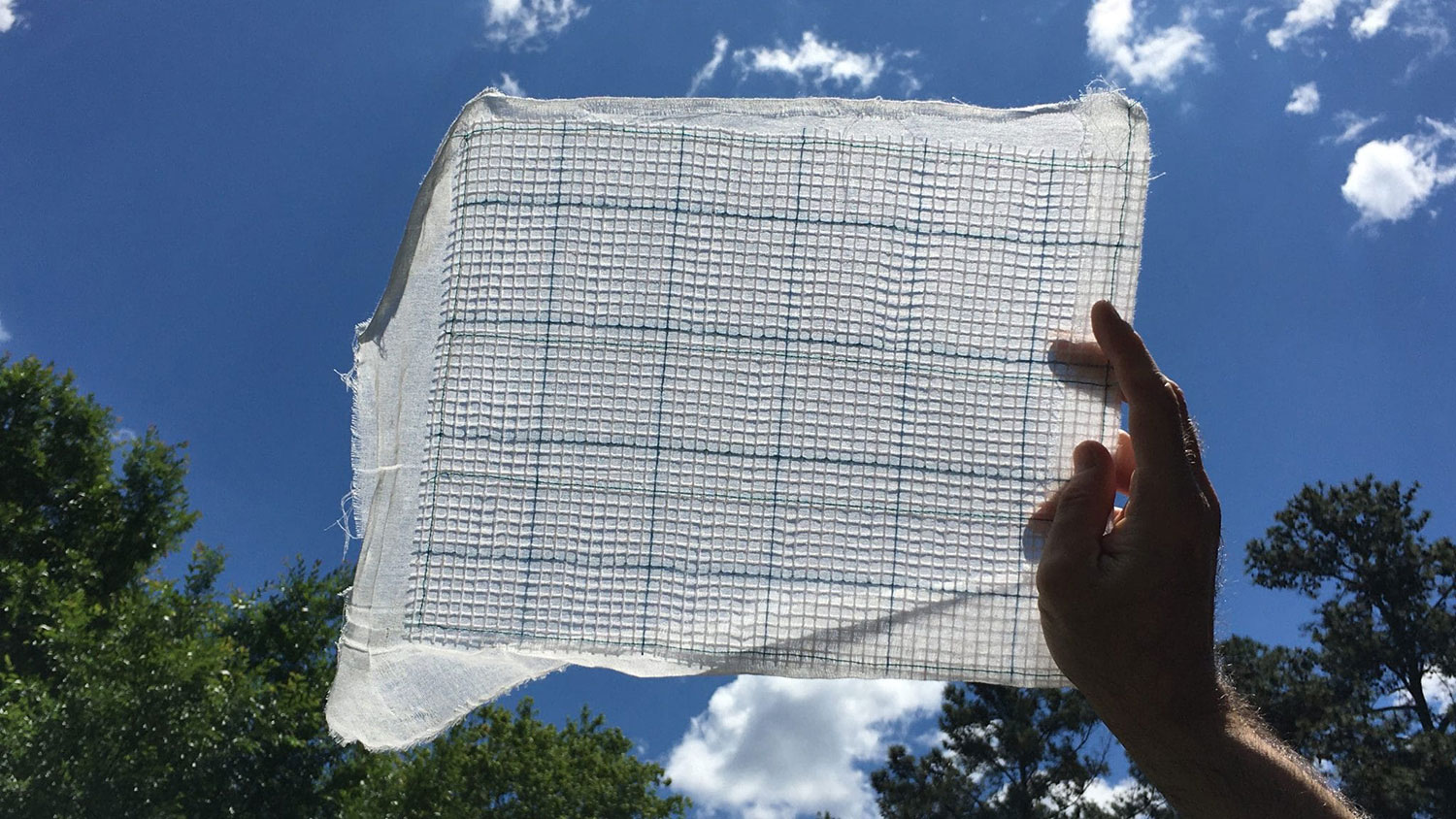
Innovative carbon dioxide (CO2) capture approaches are urgently needed to lower and reverse CO2 emissions that lead to climate change.
Researchers from North Carolina State University found they could filter carbon dioxide from air and gas mixtures at promising rates using a proposed new textile-based filter that combines cotton fabric and an enzyme called carbonic anhydrase – one of nature’s tools for speeding chemical reactions.
The centerpiece of the research team’s design for a proposed textile-based chemical filter is the naturally occurring enzyme called carbonic anhydrase. The enzyme can speed up a reaction in which carbon dioxide and water will turn into bicarbonate, which is the main ingredient in baking soda.
Researchers created a filer by attaching the enzyme to two-layer cotton fabric by dunking the fabric in a solution containing a crustacean-derived material called chitosan, which acts like glue. The chitosan physically traps the enzyme, causing it to stick to the fabric.
The team then tested how well their filter would separate carbon dioxide from an air mixture of carbon dioxide and nitrogen, simulating levels emitted by power plants. They rolled the fabric into a spiral, which was then stuffed inside a tube. The air mixture was then pumped through the tube, along with a water-based solution.
As the carbon dioxide reacted with the water in the solution and the carbonic anhydrase, it turned into liquid bicarbonate and dripped down the filter and the tube. Then, they captured the bicarbonate solution and routed it out.
When researchers pushed air through the filter at a rate of 4 liters per minute, they could pull out 52.3% of carbon dioxide with a single-stacked filter and 81.7% with a double-stacked filter. The filter worked well and maintained a high level of performance even after five cycles of washing, drying, and storing.
The team is working with collaborators to test the filter on a bigger scale and to compare their technology to other comparable technologies under study. They also are working on the problem of how to recycle the liquid after it exits the filter, as well as the process of turning the bicarbonate back into carbon dioxide so it can be stored and disposed of or used for other commercial purposes.
Textile-based filter helps remove CO2 from flue gas emissions and air
Source: Tambay News

0 Comments